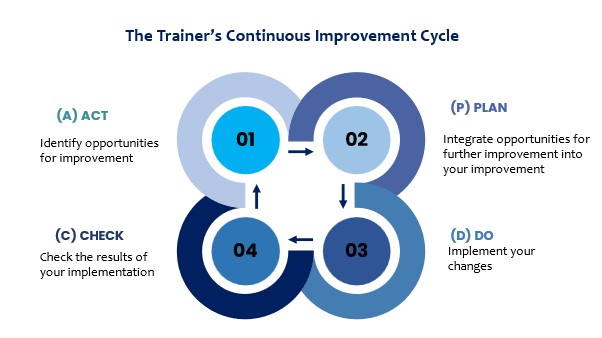Return on Learning Investment
"If you can’t measure it, you can’t manage it.”
Peter Drucker
I remember being coached on my journey to becoming a master trainer by my very good friend Laban Mawungwe. He gave me a document put together by John McKenzie & Mark Nielsen titled “Corporate Value Chain (CVC) Training Impact Assessment Methodology (2008).” Trust me, I was amazed at what I read. Back then all I knew was just to train, train, and train some more. The training needs assessment and measurement of training impact to me then came from a different planet. I learned that to be able to measure the impact of training, it was important to start your intervention as a professional with a training needs assessment. Wow, that was a light bulb moment!
Fast forward to 2022, I have now graduated to the next level of being a believer in performance needs assessment. Over the past few years, I have noticed that there are different schools of thought as to how to measure the impact of training; the current debate is about which measurement method is better. Is it the Return on Learning Expectation or Return on Learning Investment, that is what my colleagues keep asking. I believe strongly that it depends on what your client or organization is looking for and or the size of the project. Before delving into the merits and demerits of both methods of measurement, I would like to talk about why we should measure the effects/impact of training in the first place.
Years back, I did not understand why training was the first item that organizations cut when they wanted to put in place austerity measures. Now I know better, it is because some Learning and Development Professionals shy away from measurements. Organizations deal with facts and not emotions. Until we can explain the WIIFM (What’s in It for Me) and why organizations should invest money in learning and development, we should not expect our budgets to be approved.
I have put together a couple of reasons why you should measure the impact of your training programs.
1. Identify Areas for Improvement
From experience, I now appreciate the importance of a good needs assessment. The business case — why the need for the training? What outcomes do you want to see after the training? This is because when you assess a training program, you can determine whether it’s producing the outcomes you want to see. Evaluating your training programs regularly helps you identify where the training might be falling short or not engaging learners. Employees will get more from corporate training to improve performance by addressing these areas.
2. Keep Learners and Trainers Accountable
Regular evaluations hold everyone accountable to your company/client's training standard. Also, training evaluation ensures that training programs comply with the competency gaps (for example, has the sales and marketing training addressed competency gaps related to customer engagement and lead generation?) and that the deliverables are not compromised.
3. Improve Employee Retention Rate
I was amazed when I read a report by the Execu/Search Group published in 2019 — the finding showed that it’s becoming increasingly difficult to keep talent: 66% of professionals are NOT planning to stay at their organization long-term. According to the research, one of the ways to keep employees is by offering professional development. This is because 86% of professionals said they would change jobs if offered more professional development opportunities. I believe it is safe to say that individualized, quality development makes employees feel more rationally and emotionally committed to their jobs. Guess what, improving retention rates means saving your company from high onboarding costs.
4. Feedback to the Trainer/Training
The evaluation also acts as feedback to the trainer or the facilitator and the entire training process. I remember being introduced to the model below by Mark Nielsen (IFC Global Master Trainer) at an IFC TOT (now FFF) years back.
I can still hear him saying, “you need to identify opportunities for improvement, no matter how small." Since evaluation assesses individuals at the level of their work, it makes it easier to understand the loopholes in the training and the areas where changes are required.

Source: International Finance Corporation (IFC)
Having a firm evaluation model helps with the improvement of training delivery and process.
![]()
"Reflective and learning journals assist professionals in tracking their progress, identifying recurring patterns, and developing action plans."
Margaret Jackson, Rainbow Consult
5. Return on Learning Investment
I am sure this will sound like music to the ears of your finance team. Investing in employee training can lead to the building of high-performance teams, reduce defects (for those who produce tangible goods), increase sales, increase profit margins, and help your organization/client predict future growth, among others. Use regular evaluations to measure training effectiveness, refine your training methods, provide a better experience to learners, and increase ROI as a result.





